The Intel 6th Gen Skylake Review: Core i7-6700K and i5-6600K Tested
by Ian Cutress on August 5, 2015 8:00 AM EST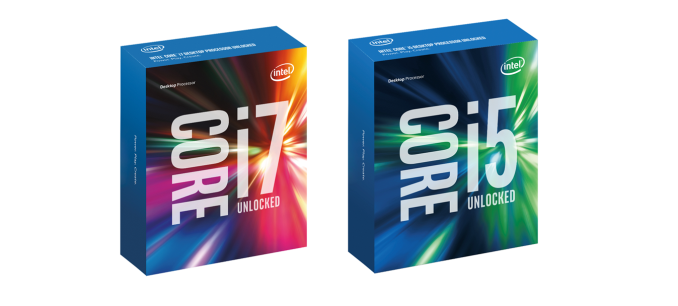
It’s the Intel review you’ve been waiting for. Today is the launch of the first two CPUs from Intel’s Skylake architecture, the 6th Generation Core i7-6700K and the Core i5-6600K. With the new processors we get a new architecture, a new socket, the move to DDR4 and the potential to increase both performance and efficiency at the same time. A lot of readers have asked the question – is it time to upgrade? We had a CPU or two in to test to answer that question.
Launch Day for Skylake-K: August 5th
For those in the industry, predicting Skylake’s launch has been a minefield. Even at Computex in June, some companies were discussing a large six-week window in which they expected Skylake but were waiting on official dates. But as we've seen with a number of previous Intel mainstream launches, Intel likes to aim at the gaming crowds release at a gaming events. It just so happens that today is Gamescom in Germany, two weeks before what everyone expected would be a launch at Intel’s Developer Forum in mid-August.
Today is a full launch for the Skylake-K processors, with the two CPUs being launched alongside new Z170 series motherboards and dual channel DDR4 memory kits. Having spoken to a few retailers, they have stock ready to go today. That being said, a number of them would have liked more stock on launch day, suggesting that they expect the processors to sell out rather quickly when the buy buttons are activated.
All the motherboard manufacturers should be ready to go as well – take a look at our breakdown of the retail motherboard information we could get before launch for a good overview of what to expect this generation. DDR4 manufacturers have been selling the new standard of memory for over a year due to Intel’s high-end X99 platform supporting it, but today will see the introduction of dual channel kits to go with the Skylake platform as well as a number of higher speed modules ready and waiting.
‘Where are the non-K processors?!’ you may ask. Intel tells us that these will be released later in the year, sometime in Q3. As a result, we have to wait and see what range of models come out at that point and we will get a number in to review.
Retail Packaging
To go with the launch is a new look of Intel's Core processor packaging, in part to appeal to the gaming crowd. As the gaming industry is considered one of the few remaining areas for potentially large growth in the PC industry, Intel is increasing its focus on gaming as a result.
Aside from changing the graphics on the box, it has been reported – and seemingly confirmed by the thinner boxes in the official pictures from Intel – that these processors will not be shipped with a stock Intel cooler. Users will have to purchase third party coolers. Part of this makes sense – overclocking processors need beefier cooling in order to extract the maximum overclock and buying something above the stock cooler should be good. The downside of not having a stock cooler means an added cost to the end user. However as the hole mounting for the new socket, LGA1151, is similar to that of LGA1150/1155/1156 – spacing is still 75mm – many existing CPU coolers for the current LGA115x sockets should be compatible, making it possible to reuse many coolers for no more than the cost of a new thermal paste application.
For users looking for a new air or liquid cooler, head on over to our recent roundup of Top Tier CPU Air Coolers Q3 2015: 9-Way Roundup Review and the Closed Loop AIO Liquid Coolers: 14-way Mega Roundup Review published last year.
The Skylake CPUs: Intel’s 6th Generation Core
Intel’s tick-tock strategy has been the bedrock of their application to bring new processors to the market, growing in terms of user experience for either power, efficiency, or both. It has been noted that certain generations either have an enterprise focus or a mobile-first focus, which always seems to tip the scales in one direction of the other. However, with the recent announcement of a third CPU line at 14nm called Kaby Lake for 2016, tick-tock just became tick-tock-tock.
| Intel's Tick-Tock Cadence | |||||
| Microarchitecture | Process Node | Tick or Tock | Release Year | ||
| Conroe/Merom | 65nm | Tock | 2006 | ||
| Penryn | 45nm | Tick | 2007 | ||
| Nehalem | 45nm | Tock | 2008 | ||
| Westmere | 32nm | Tick | 2010 | ||
| Sandy Bridge | 32nm | Tock | 2011 | ||
| Ivy Bridge | 22nm | Tick | 2012 | ||
| Haswell | 22nm | Tock | 2013 | ||
| Broadwell | 14nm | Tick | 2014 | ||
| Skylake | 14nm | Tock | 2015 | ||
| Kaby Lake (link)? | 14nm | Tock | 2016 ? | ||
Intel’s early issues with 14nm yields have been well documented and we won’t go into them here, but 14nm is a more expensive process with an increased number of lithography steps as we reach the limits of current semiconductor technology. FinFET was introduced back in 22nm, but to move down to 10nm makes either the current process more expensive or other methods have to be used. As a result, we see Moore’s Law stretching out from an 18-24 month cadence to a 24-30 month cadence for the first time in fifty years. As we’ve seen with the graphics card market recently stalling at 28nm, there is a need (or at least opportunity) to develop more power efficient architectures rather than just relying on die shrinks to do it for you.
Future development aside, today Skylake will hit the shelves in the form of two overclockable processors, the Core i7-6700K and the Core i5-6600K.
| Intel i7 Lineup | |||
| i7-4770K | i7-5775C | i7-6700K | |
| Price | $339 | $366 | $350 |
| Cores | 4 | 4 | 4 |
| Threads | 8 | 8 | 8 |
| Base CPU Freq. | 3.5 GHz | 3.3 GHz | 4.0 GHz |
| Turbo CPU Freq. | 3.9 GHz | 3.7 GHz | 4.2 GHz |
| Graphics | HD 4600 (GT2) | Iris Pro 6200 (GT3e) | HD 530 (GT2) |
| EUs | 20 | 48 | 24 |
| iGPU Freq. | 1250MHz | 1100MHz | 1150MHz |
| TDP | 84W | 65W | 91W |
| DDR3/L Freq. | 1600MHz | 1600MHz | 1600MHz |
| DDR4 Freq. | - | - | 2133MHz |
| L3 Cache | 8MB | 6MB | 8MB |
| L4 Cache | None | 128MB (Crystal Well) | None |
| Interface | LGA1150 | LGA1150 | LGA1151 |
As with previous nomenclature, the i7 model will be quad core CPU with HyperThreading and 8MB of L3 cache. This matches up with the Haswell parts to which Skylake is more closely aligned (Desktop Broadwell is rather a blip, using an external on-package eDRAM and you can read our review here), in a large number of aspects including the other cache levels. The 6700K runs at a base frequency of 4.0 GHz and an all-core frequency of 4.2 GHz. This is a slight speed bump over the 4770K which was launched at the start of Haswell, but a minor reduction in clockspeeds compared to the i7-4790K, which was an upgraded Haswell part launched later under the name of ‘Devil’s Canyon’.
The integrated graphics nomenclature has changed, with the new i7-6700K having the Intel HD 530 graphics, compared to the HD4600 in the Haswell parts. We know that the HD 530, like the HD 4600, has 24 of Intel’s execution units in the iGPU, and they run at a peak frequency of 1150 MHz. The introduction of the HD 530 marks the launch of Intel’s 9th generation graphics, and we'll cover Gen9 in a bit more detail later.
| Intel i5 Lineup | |||
| i5-4670K | i5-5675C | i5-6600K | |
| Price | $242 | $276 | $243 |
| Cores | 4 | 4 | 4 |
| Threads | 4 | 4 | 4 |
| Base CPU Freq. | 3.4 GHz | 3.1 GHz | 3.5 GHz |
| Turbo CPU Freq. | 3.8 GHz | 3.6 GHz | 3.9 GHz |
| Graphics | HD 4600 (GT2) | Iris Pro 6200 (GT3e) | HD 530 (GT2) |
| EUs | 20 | 48 | 24 |
| iGPU Freq. | 1200MHz | 1100MHz | 1150MHz ? |
| TDP | 84W | 65W | 91W |
| DDR3/L Freq. | 1600MHz | 1600MHz | 1600MHz |
| DDR4 Freq. | - | - | 2133MHz |
| L3 Cache | 6MB | 4MB | 6MB |
| L4 Cache | None | 128MB (Crystal Well) | None |
| Interface | LGA1150 | LGA1150 | LGA1151 |
The i5 model for Skylake also has quad cores, but without HyperThreading and only 6MB of L3 cache. Like the i7, it also has the Intel HD 530 graphics but operates at a lower frequency band.
Both the Skylake processors will support DDR4 and DDR3L memory in order to ease the transition to DDR4 for the mainstream segment, although it should be said that DDR3L is implemented here due to its lower than standard DDR3 operating voltage of 1.35 volts. This more closely aligns with DDR4’s standard voltage of 1.20 volts or the high end DDR4 kits at 1.35 volts, and as a result we are told that motherboards that support DDR3L will typically only be qualified to run DDR3L kits, rather than DDR3 kits.
This leads onto the point that both of the K processors for Skylake sit at 91W, which is a small increase over Haswell at 84W and Devil’s Canyon at 88W. In the past Intel has historically run a 1:1 policy whereby a 1% performance gain must come at a maximum of a 1% power penalty – this was adjust to 2:1 for Broadwell, and we should assume that Skylake had similar requirements during the planning stage. Depending on the specific architecture details, one potential source for this increase in power consumption may be the dual memory controller design, although Skylake has a significant number of features to differentiate itself from Haswell.


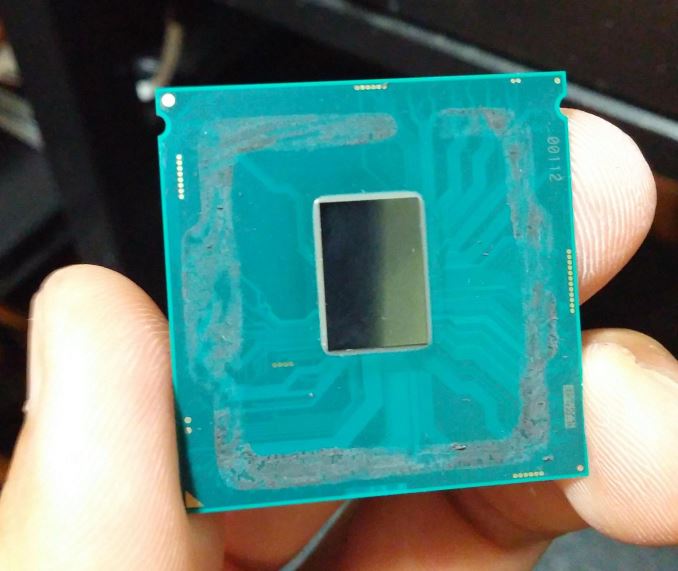
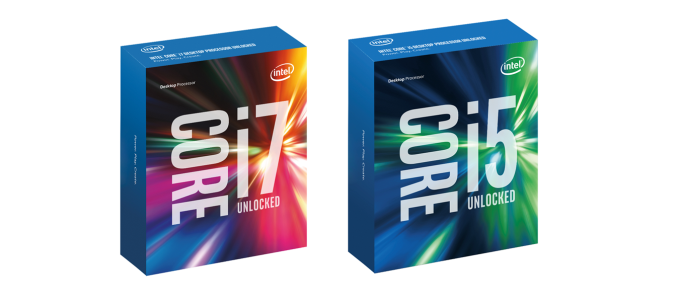
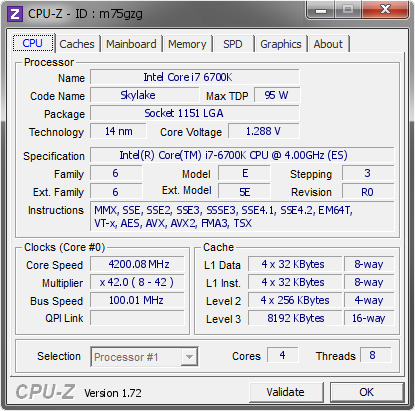
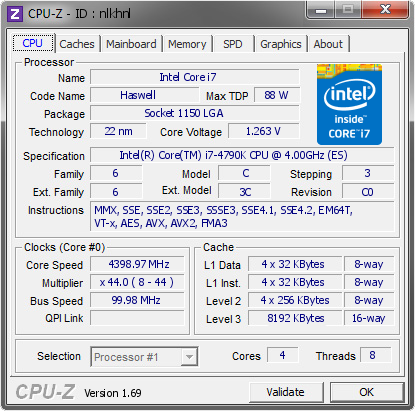
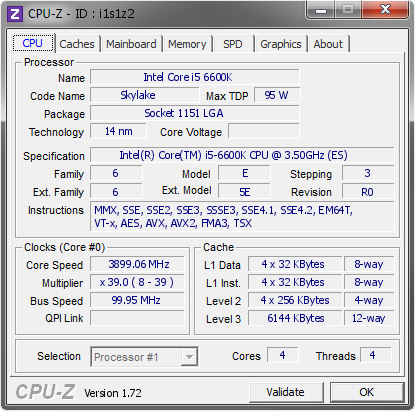
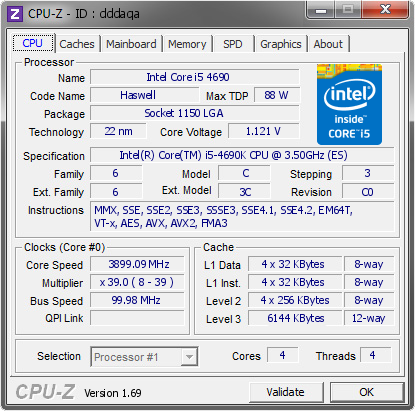








477 Comments
View All Comments
ES_Revenge - Friday, August 14, 2015 - link
Umm what the heck happened to the power consumption? In particular the i7/6700K. It's not really shown thoroughly in this review but the Broadwell CPUs are more power-efficient it seems. While the 6700K has a half GHz faster clock speed, it also has a much lesser GPU. To begin with, both the i5 and i7 Skylake parts have higher TDPs than the Broadwell desktop parts, and then the 6700K can actually draw over 100W when loaded. This is above its TDP and also significantly more than its 6600K counterpart which runs only a few hundred MHz slower. Odd.I mean I think we were all waiting for a desktop CPU that didn't have the power constraints as the Broadwell CPUs did but I don't think this is exactly what anyone was expecting. It's like these Skylake CPUs don't just take more power but they do so...for no reason at all. Sure they're faster but not hugely so; and, again, their iGPUs are significantly slower than Broadwell's. So their slight speed advantage came at the price of markedly increased power consumption over the previous gen.
That only leads me to the question--WTF? lol What happened here with the power consumption? And losing that IVR didn't seem to help anything, eh? Skylake is fast and all but TBH I was more impressed *overall* with Broadwell (and those CPUs you can't even find for sale anywhere, the last time I checked--a few weeks ago). Granted as we've seen in 2nd part of the Broadwell review it's not a stellar OCer but still, overall it seems better to me than Skylake.
It's kind of funny because when Broadwell DT launched I was thinking of how "Intel is mainly focusing on power consumption these days", meaning I thought they weren't focused enough on performance of DT CPUs. But it seems they've just thrown that out the window but the performance isn't anything *spectacular* from these CPUs, so it just seems like a step backwards. It's like with Broadwell they were showing just how much performance they could do with both CPU and iGPU with a minimum of power consumption--and the result was impressive. Here it's like they just forgot about that and said "It's Skylake...it's new and better! Everyone buy it!" Not really that impressive.
janolsen - Friday, August 14, 2015 - link
Stupid question:Can Skylake IGP easily play back 4K video. Thinking of a person just using a 4K screen for Youtube stuff, not gaming...
ES_Revenge - Saturday, August 15, 2015 - link
Yeah it can. This one of the very few improvements over Broadwell/previous HD Graphics implementations. It has a "full" HEVC decode solution built in, unlike the "hybrid" solutions they had previously. If you look on the 4th page of the review it actually goes pretty in-depth about this (not sure how you missed that?).alacard - Friday, August 14, 2015 - link
It's clear you put a ton of work into this Ian, many thanks.Flash13 - Monday, August 17, 2015 - link
So, far Intel Core i7-6700K 8M Skylake Quad-Core 4.0GHz is just vapor to the public.somatzu - Wednesday, August 19, 2015 - link
"So where'd you get your degree?""Anandtech comments section."
superjim - Friday, August 21, 2015 - link
I'm still not convinced this is a worthwhile upgrade from Sandy Bridge. If I can get 4.8 from a 2700K and maybe 4.6 from a 6700k, factor in cost difference, is it really worth it? At the end of the day, cpu/mobo/ram would be near $700 for maybe a 15% speed bump overall.watzupken - Friday, September 4, 2015 - link
From a desktop standpoint, there is very little incentive for one to upgrade. The new gen mainly targets power savings, so likely to benefit mobile users, i.e. Ultra Books and tablets.As far as Intel is trying to target those people still on Sandy and Ivy Bridge to upgrade, they fail to account for the cost of upgrade for a paltry improvement in performance. To upgrade from SB, one has to upgrade the ram, motherboard and CPU, and on top of that, need to separately purchase a heatsink since they want to cut cost.
CynicalCyanide - Saturday, August 22, 2015 - link
Question to the Authors: You've noted two DDR4 equipped mobos in the "Test Setup" section, but you've also tested DDR3 equipped Skylake. Which motherboard did you use for that?Furthermore, in a previous article it was mentioned that Z170 wouldn't be able to handle 'regular' 1.5V DDR3, but here apparently it wasn't an issue reusing old 1.5V RAM after a voltage adjustment. Was there any special method required aside from booting as per normal into the BIOS and adjusting the voltage?
TiberiuC - Saturday, August 22, 2015 - link
Everything comes down eventualy to "Intel vs AMD". What Intel did with Core2Duo was the right path to go, what AMD did was so wrong and that sometimes happen when you inovate. AMD stopped with the last FX series and went back to the drawing board and that is a wise decision. What will ZEN do? i am expecting Ivi Bridge performance maybe touching haswell here and there. If this wont happen, it is bad for them and very bad for us. Intel is starting to milk the customers acting like there is a monopoly. I did buy my 2600k for 300$ (after rebates), i have to say that the price of the 6700k is well, meh...